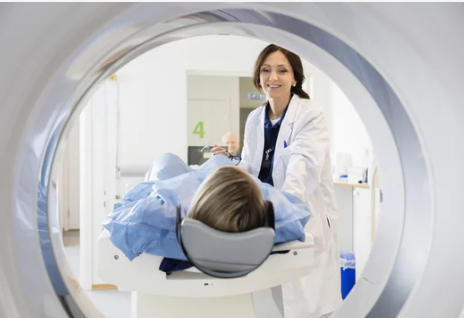Magnetic Resonance Imaging (MRI) is commonly known as a tool for medical diagnosis, but it is also playing an important role in fusion research. By providing detailed images of materials and processes, MRI helps scientists understand the inner workings of fusion experiments. This imaging allows for better control and analysis, which is critical to advancing fusion technology.
MRI contributes to fusion research by offering precise imaging that reveals critical details inside fusion experiments, supporting efforts to achieve ignition. This helps researchers monitor changes in the fusion process and improve experimental setups. The combination of MRI with other imaging methods creates a clearer picture that drives better results.
Using MRI in fusion research bridges imaging science and energy innovation. It helps push fusion experiments closer to success by improving data quality and offering new insights into complex fusion reactions. This role is vital as the energy community seeks cleaner and more efficient power sources.
Key Takeways
- MRI provides clear images that aid understanding of fusion experiments.
- Detailed MRI data supports better control of fusion processes.
- Fusion research benefits from combining multiple imaging methods.
MRI Integration in Fusion Research
MRI uses magnetic fields and radio waves to create detailed images of internal structures. Its application in fusion research focuses on understanding plasma behavior and allowing for precise, real-time observation during experiments. This integration enhances diagnostics and control in fusion reactors.
Principles of MRI Technology in Fusion
MRI technology relies on strong magnetic fields that align hydrogen nuclei in the material. Radiofrequency pulses disturb this alignment, and signals emitted during relaxation are measured to form images.
In fusion research, the magnetic environment is complex due to strong external fields from the reactor. MRI scanners used must be specially adapted to avoid interference and ensure clear data capture.
The ability to image different materials based on their nuclear makeup lets researchers study plasma and solid components around the fusion device. This improves analysis of structure and reactions within the system.
Imaging Plasma Dynamics
MRI provides detailed imaging of plasma structures, showing temperature and density variations inside fusion reactors. This helps identify instabilities that could disrupt fusion processes.
High-resolution MRI captures changes in plasma behavior over time, giving researchers insight into its dynamics and energy distribution. These images support modeling efforts designed to optimize plasma confinement.
MRI’s non-invasive nature allows repeated scans without damage, critical for ongoing plasma monitoring in experimental setups.
Real-Time Monitoring Applications
Real-time MRI monitoring helps maintain stable fusion conditions by tracking plasma movement and fluctuations. This enables quick adjustments to control systems during operation.
Fusion researchers use MRI feedback to improve magnetic field configurations and manage instabilities faster than with traditional methods. It supports informed decision-making during reactor runs.
Real-time imaging aids in detecting early signs of plasma disruptions, reducing downtime and improving safety in fusion experiments.
Advancing Fusion Ignition Through MRI
Magnetic Resonance Imaging (MRI) provides detailed views of plasma and fuel behavior during fusion experiments. It supports precise measurement of conditions inside fusion fuel pellets. This imaging helps scientists improve ignition techniques and maintain safety while working toward efficient energy release.
Diagnostic Techniques for Ignition
MRI-based diagnostics allow clear, non-invasive observation of plasma properties such as temperature, density, and magnetic fields. These measurements are crucial for understanding how fusion fuel compresses and heats during ignition attempts.
Advanced imaging captures small changes in neutron emission and energy flow. This data helps calibrate models predicting the behavior of fusion reactions.
Key diagnostic tools include:
- Time-resolved imaging of fuel implosion
- Measurement of neutron time-of-flight for energy assessment
- Real-time monitoring of magnetic confinement fields
These tools give researchers feedback to adjust laser pulses and fuel compression for better ignition results.
Enhancing Safety and Efficiency
MRI contributes to safer fusion experiments by providing early detection of irregularities in plasma behavior. This helps avoid damage to experimental setups and prevents failed ignition runs.
Improved imaging also supports more efficient energy use. By closely tracking the timing and distribution of energy within fuel pellets, adjustments can optimize laser energy delivery and reduce waste.
MRI data enables researchers to refine ignition schemes and reduce the need for repeated tests. This shortens development times and cuts costs while maintaining strict safety protocols.
Challenges and Future Perspectives
Using MRI in fusion research faces several challenges. High temperatures and intense radiation create noisy signals that can reduce image clarity. Equipment must withstand these conditions without degrading performance.
Future work aims to enhance MRI sensitivity and resolution under extreme fusion environments. Integration with other diagnostic tools will provide a fuller picture of ignition dynamics.
Improving real-time image processing is key for quicker decision-making during experiments. As MRI technology advances, it will play a larger role in moving fusion energy toward practical use.
Also Read :
